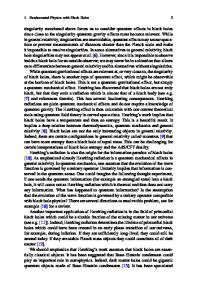Fundamental Themes in Physics from the History of Art
- PDF / 4,110,921 Bytes
- 24 Pages / 439.37 x 666.142 pts Page_size
- 52 Downloads / 412 Views
Physics in Perspective
Fundamental Themes in Physics from the History of Art Robert Fleck* Mindful of a stated Project 2061 goal of the American Association for the Advancement of Science, emphasizing that ‘‘scientific literacy includes seeing the scientific endeavor in the light of cultural and intellectual history,’’ and in the continuing spirit of narrowing the gap between the ‘‘two cultures’’ by enhancing STEAM awareness and education, this essay illustrates, quite literally through well-known works of Western art, the striking parallels between fundamental themes in physics and the visual arts through history. These connections include: the identification of microcosm–macrocosm analogies in prehistoric protoscience; the beginning of the appreciation in pre-classical antiquity of the lawfulness of nature under the aegis of a Divine Lawgiver; the rise of rationalism and the first theories of the architecture of matter during the so-called ‘‘Greek miracle’’; the overlapping role of theology’s ‘‘handmaiden’’ during the emblematic medieval Age of Faith; Renaissance renovations and the triumph of the ‘‘mechanical universe’’ as the capstone of the scientific revolution in the early modern period; the influence on physics of the Romantic notion of an underlying unity in all of nature, and the increasing abstraction in both art and physics during the nineteenth century; and, finally, the parallels between twentieth-century art and the physics of relativity and quantum theory, concluding with examples from modern cosmology.
Key words: History of ideas; history of physics; art history; art-science connections. It is amazing how compact a unity every historical epoch presents throughout its various manifestations. —Spanish philosopher and essayist, Jose´ Ortega Y Gasset (1883–1955)
Introduction Everything is, to some degree, characteristic of the setting in which it takes place. Both art and science, two of the most profound of all human activities, each attempting in its own way to interpret the world and our place in it, are cultural artifacts, socially situated and dynamically integrated within the total intellectual * Robert Fleck is Emeritus Professor of Physics and Astronomy at Embry-Riddle Aeronautical University in Daytona Beach, Florida. His PhD in astronomy is from the University of Florida.
R. Fleck
Phys. Perspect.
and cultural activity of their time. Not surprisingly, with each rooted in a common culture sharing common values, common concerns can often be identified when retracing the historical development of art and physics within their broader cultural compass. Looking primarily at painting and sculpture from the Upper Paleolithic through the modern period, this essay, examining art history as physics history, highlights the historical development of fundamental themes in physics beautifully reflected in the history of Western art.
Prehistoric Proto-Science: Microcosm–Macrocosm Analogies The oldest artifact with possible scientific underpinnings, a small, roughly 25,000year-old limestone relief scul
Data Loading...











